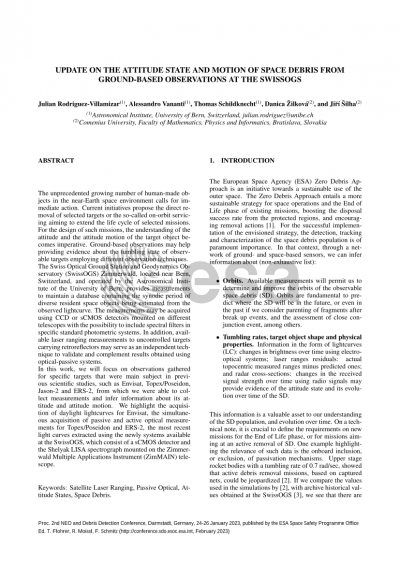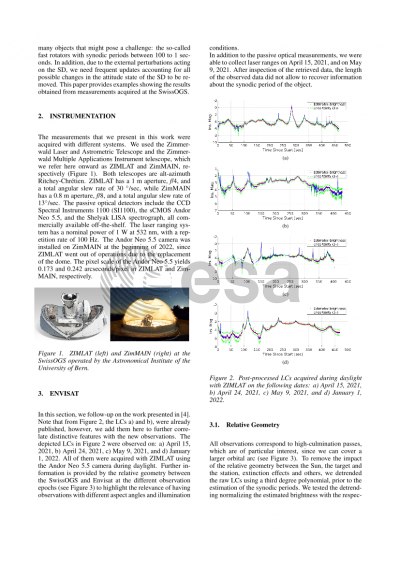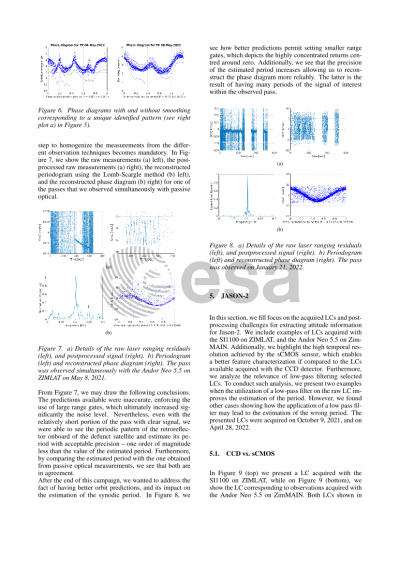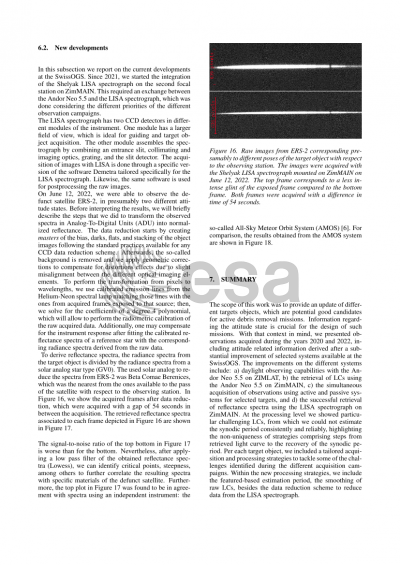Document details

Abstract
The unprecedented growing number of human-made objects in the near-Earth space environment calls for immediate action. Current initiatives propose the direct removal of selected targets or the so-called on-orbit servicing aiming to extend the life cycle of selected missions. For the design of such missions, the understanding of the attitude and the attitude motion of the target object becomes imperative. Ground-based observations may help providing evidence about the tumbling state of observable targets employing different observation techniques.
The Swiss Optical Ground Station and Geodynamics Observatory (SwissOGS) Zimmerwald, located near Bern, Switzerland, and operated by the Astronomical Institute of the University of Bern, provides measurements to maintain a database containing the synodic period of diverse resident space objects being estimated from the observed lightcurve. The measurements may be acquired using CCD or CMOS detectors mounted on different telescopes with the possibility to include spectral filters in specific standard photometric systems. In addition, available laser ranging measurements to uncontrolled targets carrying retroreflectors may serve as an independent technique to validate and complement results obtained using optical-passive systems.
In this presentation, we will focus on observations gathered for specific targets that were main subject in previous scientific studies, such as Envisat, Topex/Poseidon and Jason-2, from which we were able to collect measurements and estimate information about its attitude and attitude motion. We highlight the acquisition of daylight lightcurves for Envisat, the simultaneous acquisition of passive and active optical measurements for Topex/Poseidon, and the most recent light curves extracted using the newly system available at the SwissOGS, which consist of a CMOS detector mounted on the Zimmerwald Multiple Applications Instrument (ZimMAIN) telescope.
Preview










